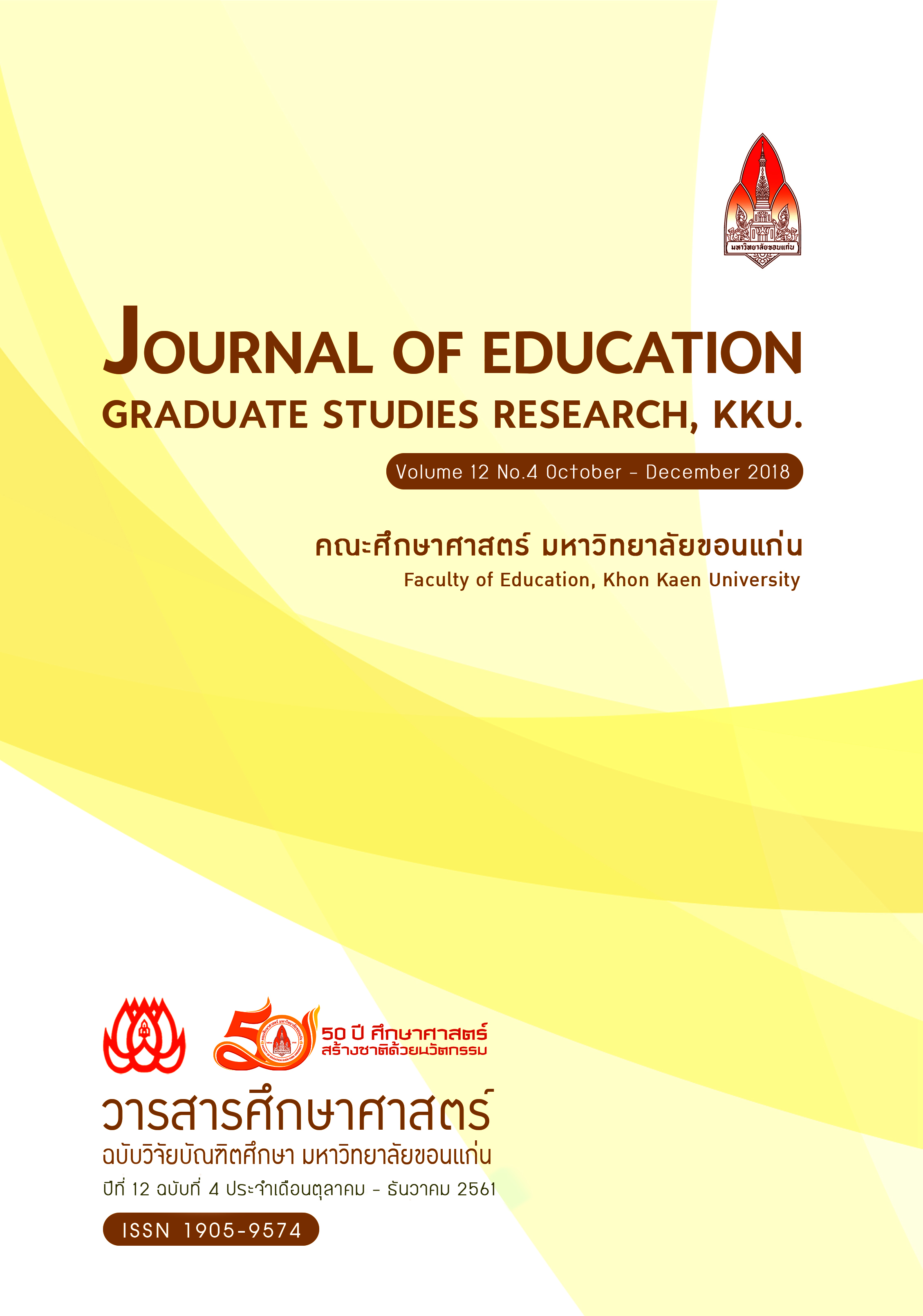Conceptual Understanding of Grade 11 Studentson Acid Dissociation Using Open Inquiry and Physical Model
Main Article Content
Abstract
The purpose of this research was to investigate students’ conceptual understanding learned through open inquiry-based instruction and physical model of acid dissociation. Participants were 26 grade, 11 students, in Khonkaen province. The research tools consisted of 3 lesson plans and physical models. The data collecting tools included a conceptual understanding test and a semi-structured interview. Data from the conceptual understanding test was collected before and after implementing an intervention. After collecting data from the conceptual understanding test, there was a student interview for additional information. Data analyzed as a percentage of a number of students and analyzed pretest and posttest. The statistic used for analyzing the data were non-parametric statistic and Wilcoxon signed ranks tests.
The students’ conceptual understanding of acid dissociation using open inquiry and physical model had a posttest higher than pretest for all the concepts. This indicated that this intervention can improve students’ conceptual understanding of acids dissociation at the significance level 0.05 (Z = -2.928, p< 0.05)
Article Details
References
Banchi, H., and Bell, R. (2008). The many levels of Inquiry. Science and Children, 46(2), 26-29.
Beyza, K. B. (2013). Using two-tier test to identify primary students’conceptual understanding and alternative conception in acid-base. Mevlana International journal of education,3(2), 19-26.
Briggs, M. W., and Bodner, G. M. (2005). A model of molecular visualization. In Gilbert. J. K. (Ed.). Visualization in science education (pp. 61-73). Netherlands: Springer.
Buck, L. B., Bretz, S. L., andTowns, M. H. (2008). Characterizing the level of inquiry in the undergraduatelaboratory. Journal of College Science Teaching,38(1), 52-58.
Çalik, M.,and Ayas, A. (2005). A comparison of level of understanding of eighth-grade students and science student teachers related to selected chemistry concepts. Journal of Research in Science Teaching, 42(6), 638-667.
Chiu, M. H., (2007). A national survey of students’ conceptions of chemistry in Taiwan.Chemical Education International, 29, 421-452.
Cullen, D. M.,and Pentecost, T. C. (2011). A model approach to the electrochemical cell: An inquiry activity. Journal of Chemical Education,88(11), 1562-1564.
Demirciolu, G., A. Ayas, andH. Demirciolu. (2005). Conceptual changeachieved through a new teaching program on acids and bases. Chemistry Education Research and Practice,6,36–51.
National Research Council. (2012). Aframework for k-12 science education: Practices, crosscuttingconcepts, and core ideas. Committeeon a Conceptual Framework for NewK-12 Science Education Standards.Board on ScienceEducation,Division of Behavioral and SocialSciences and Education. Washington, DC: The National Academies Press.
Pedaste, M., Mäeots, M., Siiman, L. A., de Jong, T., van Riesen, S. A., Kamp, E. T., Manoli, C. C., Zacharia, Z., andTsourlidaki, E. (2015). Phases of inquiry-based learning: Definitions and the inquiry cycle. Educational researchreview, 14, 47-61.
Sheppard, K. (2006). High school students’ understanding of titrations and related acid-base phenomena. Chemistry Education Research and Practice, 7(1), 32-45.
Supasorn, S. (2015). Grade 12 Students’ conceptual understanding and mental models of galvanic cells before and after learning by using small-scale experiments in conjunction with a model kit. Chemical Education, 16, 393-407.
Treagust, D., Won, M., and Chandrasegaran A. L. (2016) High school students’ understanding of acid-base conception: an ongoing challenge for teacher. International Journal of Environmental & Science Education, 11(1), 9-27.

